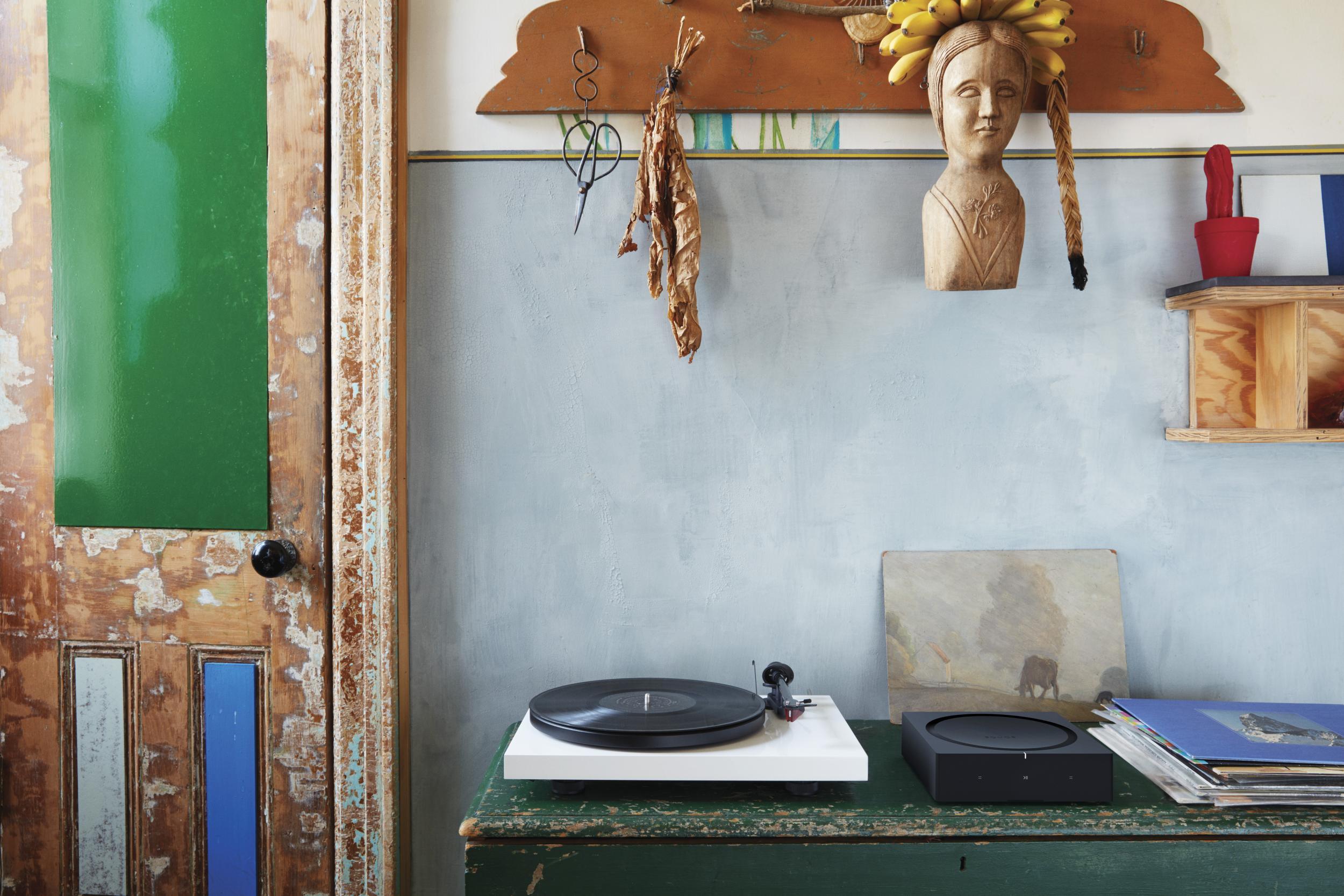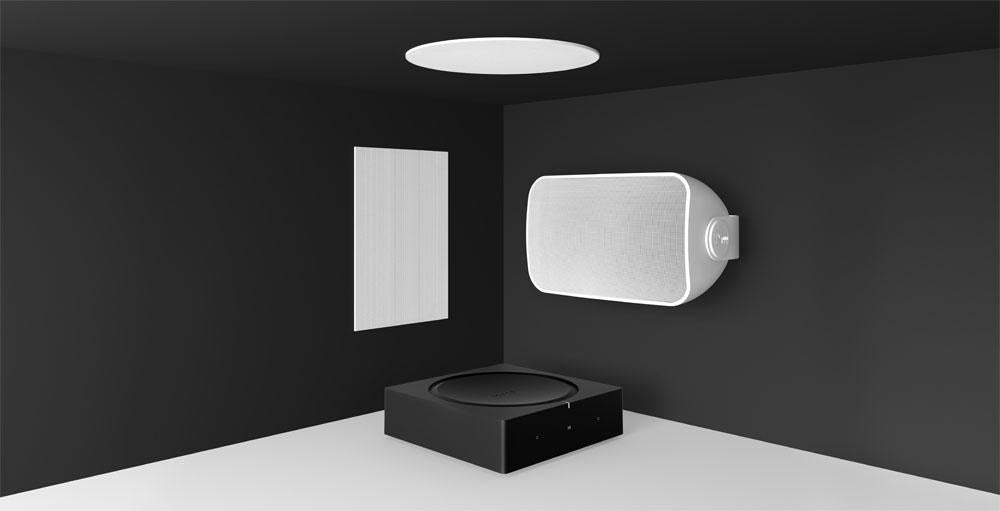Sonos: Why the smart speaker firm doesn't want you to see its latest products
The new Amp and 'architectural speakers' are built to disappear

Your support helps us to tell the story
From reproductive rights to climate change to Big Tech, The Independent is on the ground when the story is developing. Whether it's investigating the financials of Elon Musk's pro-Trump PAC or producing our latest documentary, 'The A Word', which shines a light on the American women fighting for reproductive rights, we know how important it is to parse out the facts from the messaging.
At such a critical moment in US history, we need reporters on the ground. Your donation allows us to keep sending journalists to speak to both sides of the story.
The Independent is trusted by Americans across the entire political spectrum. And unlike many other quality news outlets, we choose not to lock Americans out of our reporting and analysis with paywalls. We believe quality journalism should be available to everyone, paid for by those who can afford it.
Your support makes all the difference.Sonos doesn't want you to see what it's been up to.
The smart speaker company has released a whole range of new kit. Taken together, it is both a noticeable departure from the company's recent history but also a surprising embrace of its past: it wants to give you speakers that you can hide away, and is aiming them squarely at the professional installers that helped the company grow when it was founded less than 20 years ago.
Sonos has announced not only that its new Amp will go on sale in a new and wider variety of places – including the UK and the rest of Europe, and allowing them to finally plug their existing speakers into the internet – but also that it will come alongside a new collection known as Sonos Architectural by Sonance, developed in partnership with the latter company. Those speakers are built to fade away: to stick to the walls and near-invisibly make sound, as well as also offering the first ever Sonos speaker made to live outside.
The new kit is made to work together: the Sonance speakers need an amp, and the amp needs speakers of some form. But more than that they are united by one big idea: that they both are made to disappear.
It’s a big break from the company’s other recent releases, which have included bright new speakers and special editions that are meant to be seen as much as heard. The Beastie Boys Play:5 took the sharp aesthetic of the New York group and plastered it over the front of a big speakers, and the bright colours of the Sonos One that was made with Hay include a bitter lemon that seemed design specifically to stand out.
Colours are incorporated into the new speakers, too. But precisely so that they’ll disappear: the Sonance grilles are made so they can be painted over with the same paint as your walls, and disappear into them. Sonos calls these architectural speakers, made so that they'll fade into the structure of your house.
But it might not be all that much of a departure after all.

“With all the products we develop, we want the sound and the sound experience to be at the forefront,” says Benji Rappoport, product manager at Sonos. “In some ways, the Sonos Amp and the architectural speakers are almost the most pure instantiation of that.”
As well as taking a different philosophy in approaching what the speakers look like – or, rather, whether they’re visible at all – the new speakers means relaxing something else that has been central to Sonos’ other offerings: control. With most of the rest of its line, Sonos makes everything from the beginning to the end, packaging it all up into one integrated box. The Amp is made specifically to allow third-party speakers to join the Sonos ecosystem; the Sonance products are just one of a range of different speakers that Sonos is working on with other companies that also include Ikea.
Rappoport is open about the fact that the design of the new speakers mean giving up some element of control. But there’s still plenty of power, in every sense of the word.
The company chose an amplifier design that ensured that the music will still be as clear and consistent as it could be even with a variety of different speakers, he says. Everything was developed in-house, and included close liaison with the suppliers who make the products.
Even the extra power built into the new Amp means that Sonos can be confident that there is enough guts to move those speakers and ensure that a wider variety of speakers can move around just as Sonos wants them to.
The Amp is made with professional installers in mind, presumably on the assumption that anyone looking to fill their walls with wires, speakers and £600 amps is also likely to pay someone to put them in.
“At the beginning, we really looked at how the Connect Amp is being used,” he says. “What was very obvious is that the majority were being installed by professionals; the whole adventure began with installation professionals.”
It soon became a process of filling in the gaps that were still left in Sonos’ offering. The most obvious one, Rappoport says, is the form factor, which led to a process of looking through endless pictures of equipment racks with Connect Amps on them and trying to work out what was going wrong.
“What we learnt is that the equipment rack is not just the place where the technology lives. It’s the calling card of the professional installer. It represents their craft and craftmanship.”
And so the new Amp was designed to sit there in a way those installers could be proud of. It nestles down much more densely, and is entirely black and square to ensure that it is able to present itself as “clean, modern and professional” – and the person putting it there in the same light.

At the same time as the Amp first arrived, another three-letter word was regularly thrown around: API. Sonos has stressed that its Amp will be complemented by a range of software and services that will be built into the system, offering APIs that make it easy for developers to connect to Sonos speakers and help deliver the company’s vision of a “sonic internet”.
Speakers that disappear might be central to that: they offer something like the audio part of the computer that your house might one day become. Rappoport speaks about audio announcements and alerts, which will be of particular interest to professional installers. All of your smart home life might one day linked together: it’s not difficult to imagine that your internet-enabled doorbell might ring out of the speaker hidden in your wall, and that you’ll talk back to the Alexa-containing Sonos One in your kitchen to tell your door’s lock to open the door.
The new Amp and speakers don’t have Alexa inside, though they can be controlled with it. Rappoport says Sonos made the “really difficult decision” to leave voice assistants out of its newest gear because it would lead to a “terrible tension” that encouraged installers to leave the boxes out so they could be spoken to when really they should be hidden away, out of sight and also out of voice range. (All of Sonos's other recent releases have brought Alexa control to existing product types; they've also been made to be more noticeable.)
That vision of the voice-enabled, audio-notified future isn't yet here. But Sonos' plan is to ensure that it and its customers are ready for when it is. The Amp includes a whole range of kit that might not be useful straight away but one day could be. But Sonos' real idea is that future doesn't arrive in a vision at all: that you'll hear it, from somewhere, approaching out of your walls.
Join our commenting forum
Join thought-provoking conversations, follow other Independent readers and see their replies
Comments